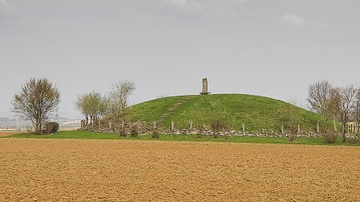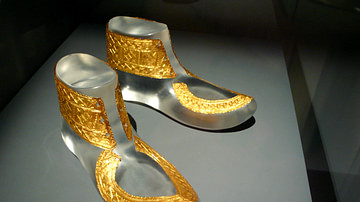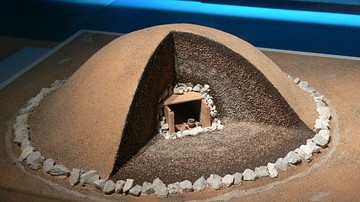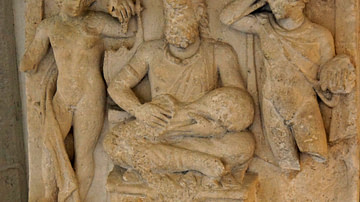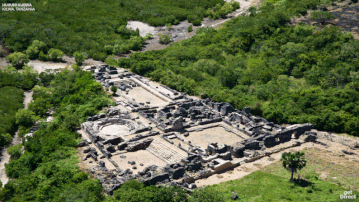Illustration
A reconstruction of an Iron Age grave from Hochdorf an der Enz in Baden-Württemberg, Germany. This burial mound is associated with the Hallstatt Culture, and the man interred is believed to have been a Celtic "prince" or chieftain. The grave dates to around 530 BCE, and is located near the remains of a Celtic village which contained several farmsteads.
It contained a wagon and a large bronze cauldron filled with about 400 litres (100 gallons) of mead, nine drinking-horns, and tableware for nine people. The chieftain was about 40 years old and over 6 feet tall (unusually large for an Iron Age individual). He was wearing a birch hat, brightly coloured clothing, a gold torc, bracelet, and several amber beads. The grave goods also included a comb, a dagger, fishing hooks, arrows, and other tools made of bone, bronze, and antler. From the Celtic Museum in Hochdorf, Germany.
References
- The Celtic Museum - HochdorfAccessed 18 Jun 2019.
Cite This Work
APA Style
Hagdorn, M. (2019, June 17). Reconstruction of the Hochdorf Chieftain's Grave. World History Encyclopedia. Retrieved from https://www.worldhistory.org/image/10932/reconstruction-of-the-hochdorf-chieftains-grave/
Chicago Style
Hagdorn, Magnus. "Reconstruction of the Hochdorf Chieftain's Grave." World History Encyclopedia. Last modified June 17, 2019. https://www.worldhistory.org/image/10932/reconstruction-of-the-hochdorf-chieftains-grave/.
MLA Style
Hagdorn, Magnus. "Reconstruction of the Hochdorf Chieftain's Grave." World History Encyclopedia. World History Encyclopedia, 17 Jun 2019. Web. 18 Apr 2024.


